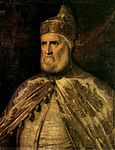
Tiziano Vecellio, Latinized as Titianus, hence known in English as Titian, was an Italian Renaissance painter, the most important artist of Renaissance Venetian painting. He was born in Pieve di Cadore, near Belluno. During his lifetime he was often called da Cadore, 'from Cadore', taken from his native region.

Lorenzo Lotto was an Italian Renaissance painter, draughtsman, and illustrator, traditionally placed in the Venetian school, though much of his career was spent in other north Italian cities. He painted mainly altarpieces, religious subjects and portraits. He was active during the High Renaissance and the first half of the Mannerist period, but his work maintained a generally similar High Renaissance style throughout his career, although his nervous and eccentric posings and distortions represented a transitional stage to the Florentine and Roman Mannerists.

Pietro Aretino was an Italian author, playwright, poet, satirist and blackmailer, who wielded influence on contemporary art and politics. He was one of the most influential writers of his time and an outspoken critic of the powerful. Owing to his communications and sympathies with religious reformers, he is considered to have been a Nicodemite Protestant. He was a good friend and publicist of the Venetian artist Titian, who painted his portrait three times.

Sir Joseph Archer Crowe was an English journalist, consular official and art historian, whose volumes of the History of Painting in Italy, co-written with the Italian critic Giovanni Battista Cavalcaselle (1819–1897), stand at the beginning of disciplined modern art history writing in English, being based on chronologies of individual artists' development and the connoisseurship of identifying artist's individual manners or "hands".

Agnolo di Cosimo, usually known as Bronzino or Agnolo Bronzino, was an Italian Mannerist painter from Florence. His sobriquet, Bronzino, may refer to his relatively dark skin or reddish hair.

Andrea Gritti was the Doge of the Venetian Republic from 1523 to 1538, following a distinguished diplomatic and military career. He started out as a successful merchant in Constantinople and transitioned into the position of Bailo, a diplomatic role. He was arrested for espionage but was spared execution thanks to his good relationship with the Ottoman vizier. After being freed from imprisonment, he returned to Venice and began his political career. When the War of the League of Cambrai broke out, despite his lack of experience, he was given a leadership role in the Venetian military, where he excelled. After the war, he was elected doge, and he held that post until his death.

Museo di Capodimonte is an art museum located in the Palace of Capodimonte, a grand Bourbon palazzo in Naples, Italy designed by Giovanni Antonio Medrano. The museum is the prime repository of Neapolitan painting and decorative art, with several important works from other Italian schools of painting, and some important ancient Roman sculptures. It is one of the largest museums in Italy. The museum was inaugurated in 1957.
The decade of the 1490s in art involved some significant events.

Salome, also known as Salome with the Head of John the Baptist, is an oil painting by the Venetian painter Titian, made in about 1550, and currently in the collection of the Museo del Prado in Madrid. It is not to be confused with other compositions of Salome and Judith by Titian.

Girl with a Platter of Fruit, also known as Lavinia Holding a Charger Filled with Fruit, Lavinia as Flora, and Pomona, is an oil painting by the Venetian painter Titian, made in about 1555–1558, and currently in the collection of the Gemäldegalerie, in Berlin.

Portrait of Jacopo Sannazaro, also known as Portrait of a Man, is an oil painting by the Venetian master Titian, dated to about 1513. It is part of the Royal Collection, and hangs in Buckingham Palace.

Portrait of the Physician Gian Giacomo Bartolotti da Parma, also known as Portrait of a Man, is an oil painting by the Venetian master Titian, made c. 1515-1518. The painting is in the collection of the Kunsthistorisches Museum, in Vienna.
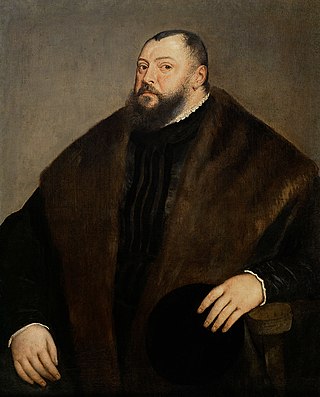
Portrait of John Frederick I, Elector of Saxony is an oil on canvas painting by the Venetian painter Titian, made in late 1550 or early 1551. The painting is in the collection of the Kunsthistorisches Museum, in Vienna.
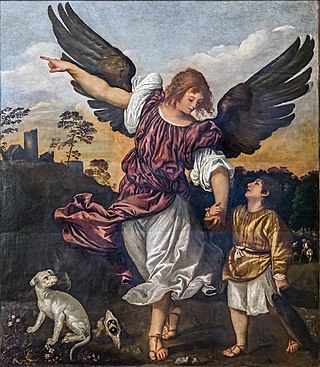
The Archangel Raphael and Tobias is an oil painting by Titian of Tobias and the Angel, dated to about 1512 to 1514, which is now in the Gallerie dell'Accademia in Venice. Another painting by Titian of the same subject, entitled Tobias and the Angel, dated to about 1540 to 1545, remains in the church of the Madonna dell'Orto in Venice.
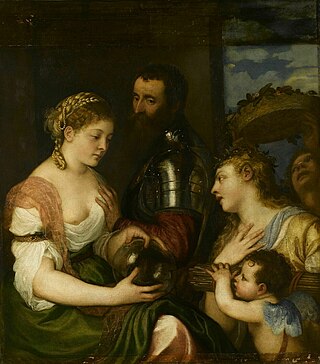
The Allegory of Marriage, also titled the Allegory of Separation, and formerly known as the Allegory of Alfonso d'Avalos, is an oil painting by Titian, made about 1530 to 1535, in the collection of the Louvre. There are several fairly early copies, done after Titian, including two in the Royal Collection.
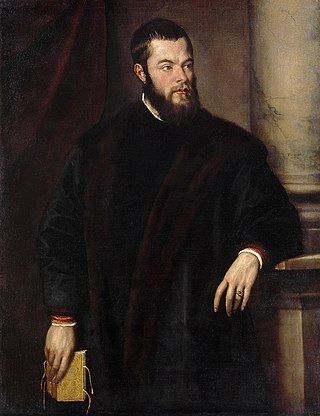
Portrait of Benedetto Varchi, also called Portrait of a Man, is an oil on canvas painting by Titian. It was painted c. 1536-1540, and hangs today in the Kunsthistorisches Museum, in Vienna.
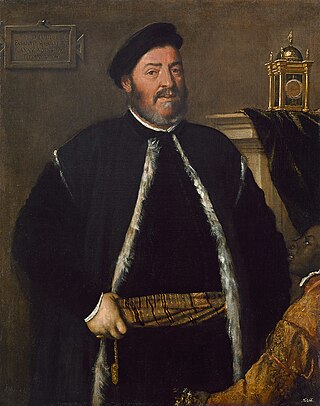
Portrait of Fabrizio Salvaresio is an oil painting by Titian. It is signed and dated 1558, and hangs today in the Kunsthistorisches Museum, in Vienna.

The Baptism of Christ is a religious painting by Titian, dated to about 1512, in the collection of the Capitoline Museums, Rome.

Portrait of Count Antonio Porcia and Brugnera is an oil painting by Titian, dated to c. 1535-1540. It hangs in the Pinacoteca di Brera, in Milan.




